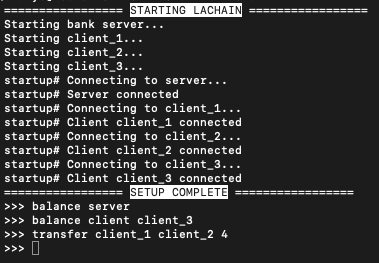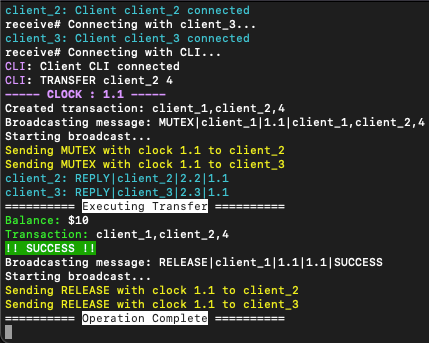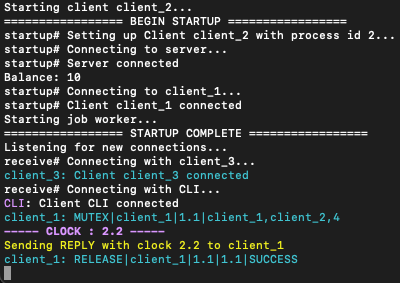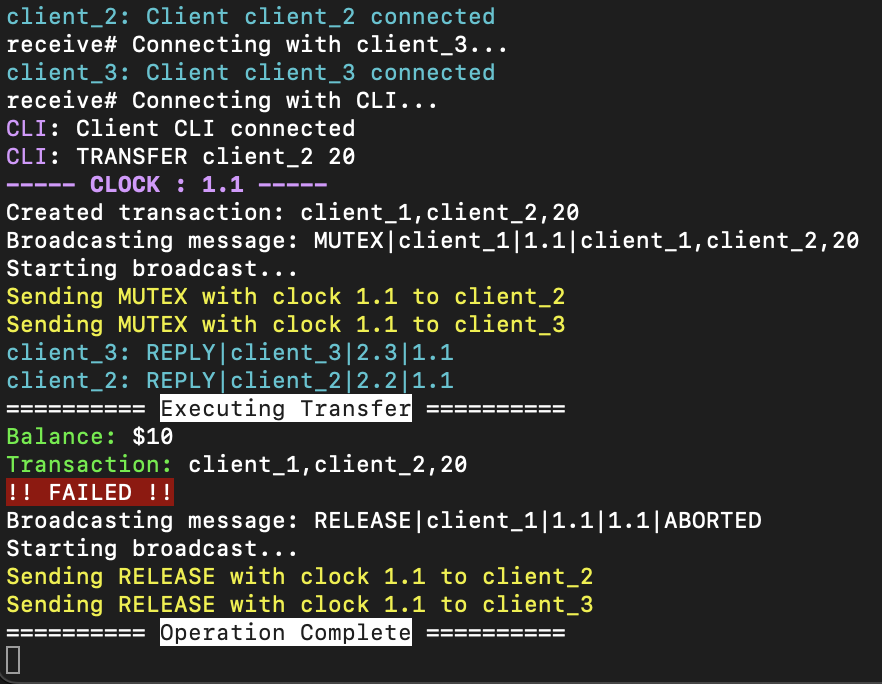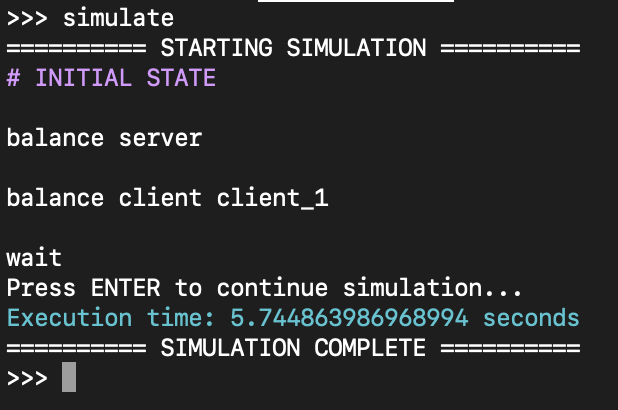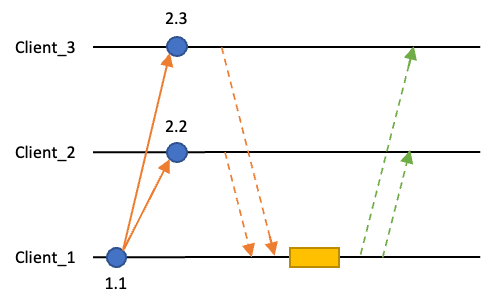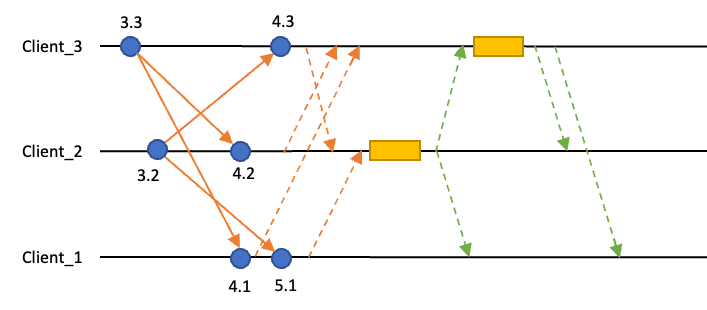A distributed system based on Lamport's mutual exclusion algorithm that uses blockchains as the process queue.
The system specifications can be changed vis the config.py file.
The system consists a bank server and clients, both of which can be receive commands from the CLI.
The following table details each config variable. These can be changed to modify the system as wished.
| Variable | Description |
|---|---|
BANK_PORT |
Port for the bank's listening socket. |
CLIENT_PORTS |
Ports for the respective client's listening sockets. Add/remove clients here with a port number to set number of clients. |
BUFF_SIZE |
Max size of the buffer read by the recv() of a socket. |
HOST |
Host IP address. Localhost for local execution. |
INIT_BALANCE |
The initial balance with which every client starts. |
DEF_DELAY |
The delay before messages are sent among clients to simulate time taken for message passing |
The clients can make 2 kinds of transactions:
- Balance: Get the balance of self from the server
- Transfer: Transfer a certain amount from self to another client
Only the Transfer transaction requires a mutex lock to be acquired on the server by a client.
If you do not have applescript for python installed, run on terminal:
pip3 install applescriptClone the repository and navigate to the repository root.
Startup the system by running:
python3 lachain.pyThis terminal instance will function as the CLI for the system.
View the balance table on the server terminal:
>>> balance serverThe server terminal prints the balance sheet as.
The valid client names are:
client_1
client_2
client_3
>>> balance client <client_name>
example:
>>> balance client client_1The client fetches and prints the balance as such.
>>> bchain <client_name>
example:
>>> bchain client_1The client's terminal prints out the blockchain as such.
>>> transfer <from_client_name> <to_client_name> <amount>
example:
>>> transfer client_1 client_2 5The client tries to get a mutex lock in coordination with other clients and executes the transaction when it achieves the lock. The transaction will be a success iff the requested transfer amount is less than or equal to the balance of the client.
From L-R: Terminal output for a successful transaction from a client; terminal output for a client receiving the mutex request; terminal output for a failed transaction
The simulation.txt file can be modified to run simulations on the system.
The file contains a default simulation showing 4 basic scenarios.
To run the simulation, run in the CLI:
>>> simulate
The simulation file can have the commands detailed in LaChain CLI and 3 othe commands: delay, wait and #.
The delay commands pauses the simulation for the specified number of seconds. The value can be an integer or fraction.
delay <duration>
example:
delay 2
delay 0.5
The wait command pauses execution and waits for user input ENTER to resume. This command does not take any parameters.
wait
The # command can be used for verbose output in the CLI while running the simulation. The lise starting with # will not be executed, but will be printed in a color.
# Simulation 2 : foo bar
A simulation run on the CLI would look something like:
The simulatio nfile in this repo simulates 4 basic scenarios:
- A single transfer transaction, with transaction amount less than the balance (success)
- 2 concurrent transfer transactions
- 3 concurrent transfer transactions
- A single transfer transaction, with transaction amount greater than the balance (abort)
The execution events for 1 and 4 are similar, so only 1 has been detailed here. Every next scenario continues from the state in which the previous scenario ended.
A single transfer transaction is issued by client_1. The client gets a mutex and executes the transaction.
As per Lamport's totalally ordered clock, the transaction issued by client_2 has a higher priority over the transaction issued by client_3. We issue the transaction from client_3 first and after a slight delay, from client_2.
The client_2 achieves a mutex lock and executes the transaction first, and then client_3 executes its transaction.
The transactions issued by the 3 clients have their priority in the order client_2 > client_3 > client_1.
We issue the transactions in the reverse order, with slight delays between them. Still, the order of execution follows the order of priority.
